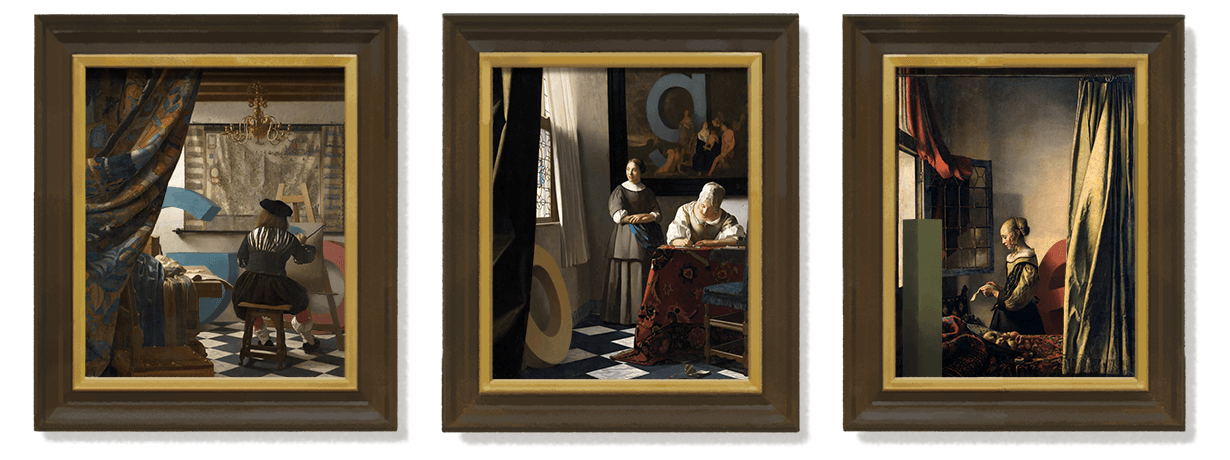Johannes Vermeer : Today’s Google Doodle celebrates Dutch painter Johannes Vermeer
Johannes Vermeer : Today’s Google Doodle celebrates Dutch painter Johannes Vermeer
Johannes Vermeer (October 1632 – December 1675) was a Dutch Baroque Period[3] painter who specialized in domestic interior scenes of middle-class life. During his lifetime, he was a moderately successful provincial genre painter, recognized in Delft and The Hague. Nonetheless, he produced relatively few paintings and evidently was not wealthy, leaving his wife and children in debt at his death.
Vermeer worked slowly and with great care, and frequently used very expensive pigments. He is particularly renowned for his masterly treatment and use of light in his work.
Relatively little was known about Vermeer’s life until recently. He seems to have been devoted exclusively to his art, living out his life in the city of Delft. Until the 19th century, the only sources of information were some registers, a few official documents, and comments by other artists; for this reason, Thoré-Bürger named him “The Sphinx of Delft”. John Michael Montias added details on the family from the city archives of Delft in his Artists and Artisans in Delft: A Socio-Economic Study of the Seventeenth Century (1982).
Activate – AXS TV axs.tv/activate: Watch Activate AXS TV on Roku, Amazon and Fire TV
Painting materials
One aspect of his meticulous painting technique was Vermeer’s choice of pigments.He is best known for his frequent use of the very expensive ultramarine (The Milkmaid), and also lead-tin-yellow (A Lady Writing a Letter), madder lake (Christ in the House of Martha and Mary), and vermilion. He also painted with ochres, bone black and azurite.The claim that he utilized Indian yellow in Woman Holding a Balance has been disproven by later pigment analysis.
In Vermeer’s oeuvre, only about 20 pigments have been detected. Of these 20 pigments, seven principal pigments which Vermeer commonly employed include lead white, yellow ochre, vermilion, madder lake, green earth, raw umber, and ivory or bone black.
In his earliest paintings, Vermeer surveyed the styles of various seventeenth-century artists. For example, in Christ in the House of Martha and Mary (ca. 1654–55; Scottish National Gallery, Edinburgh), he achieved an unlikely mixture of Anthony van Dyck and Hendrick ter Brugghen. The Procuress (1656; Dresden, Gemäldegalerie Alte Meister, Dresden) recalls Caravaggesque works by the court painter Gerrit van Honthorst, except for the apparent self-portrait which in its handling of light and soft focus resembles a moment caught in a mirror.
Similar effects had been achieved in Delft by the short-lived Rembrandt disciple Carel Fabritius, who is often credited with encouraging Vermeer’s later perspective skills. However, Vermeer’s mature interest in naturalistic effects, his carefully balanced compositions, and his domestic subjects derive from numerous sources in Delft and the south Holland area. As the painter worked on a picture, the world of art was constantly tested against direct observation. Vermeer was intensely preoccupied with the behavior of light and other optical effects such as sudden recessions and changes of focus.
https //www.golf.tv/activate Login : Activate Golf TV with Verification Code on Devices
These qualities in Vermeer’s work may have been inspired by an interest in the camera obscura (which projects actual images), but its importance to the artist has been greatly exaggerated. His compositions are mostly invented and exhibit the most discriminating formal relationships, including those of color. In addition, Vermeer’s application of paint reveals extraordinary technical ability and time-consuming care.
Today’s Google Doodle celebrates Dutch painter Johannes Vermeer
The subject of today’s Doodle is Dutch artist Johannes Vermeer, widely considered as one of the finest Dutch painters of all time and a fundamental figure in the Baroque movement. On this date in 1995, the National Gallery of Art in Washington, D.C., inaugurated an exhibition of the same name, showcasing 21 of the artist’s 35 surviving pieces.

Born in Delft, the Dutch Golden Age of 1632 saw the birth of Johannes Vermeer. While little is known about the early life of Vermeer, scholars believe his early mythological works indicate he first wanted to be a history painter..
By the 1650s, Vermeer had developed a signature style characterised by traditional Dutch motifs and painted interiors with subtle lighting and elaborate iconography. The Girl with the Pearl Earring (1665), which is currently on exhibit at the Mauritshuis museum in The Hague, the Netherlands, is one of his many masterpieces. It’s still out in the air what Vermeer’s artistic methods were. Despite the fact that some art historians believe Vermeer traced images from a camera obscura, which is considered the precursor to the photographic camera, others who specialise in Vermeer remain dubious.
https //indianairforce.nic.in recruitment 2021 : Indian Air Force Recruitment 2021
The Allegory of Painting (1666-1668) is referenced on the left, while “Woman Writing a Letter, with her Maid” (1668) is referenced in the centre (1670-1671). On the right side of the Doodle, you’ll see a reference to an X-ray that discovered a hidden Cupid in Vermeer’s “Girl Reading a Letter at an Open Window” (1657-1659). A second painter had painted over Cupid’s head, according to 2017 analysis of the picture. The picture was totally repaired in 2021 thanks to a German effort. A handful of the many attempts to dispel the mystery of Vermeer and the prized works of art he left behind are included here.
Johannes Vermeer is a true master of the visual arts, and we salute him!